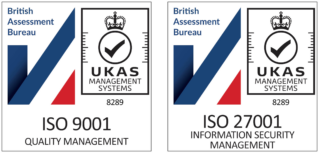Making sense of identity document checks at Oxford City Council

When I joined the TrustID team, I was struck by the tremendous passion here for what we do. In the TrustID office, the team talk about how, for many organisations, electronic scanning technology is a ‘no-brainer’. Those cynics amongst you are probably thinking that of course we would say that, but a recent visit to one of our customers, Oxford City Council, gave me a real insight into how our technology can help and why this phrase is a really good one.
Simple but robust checks
Oxford City Council have been scanning and making identity document checks with our technology since June 2014 and, in that time, they have captured well over 10,000 scans. They use our scanning technology in customer-facing areas as well as within their HR team. As a busy council serving over 150,000 members of the public, their focus is on being able to run simple but robust checks before giving access to public services – to make sure that those claiming are who they say they are – and complying with Right to Work checks on their own staff too.
I’m the Marketing Manager here and I’m often somewhat detached from the ‘frontline’ so it’s fascinating to see the technology ‘in situ’ and to speak to users about how they use the software and the benefits that it brings.
During my day in Oxford, I saw the Council making full use of identity document scanners, both in the customer-facing areas and also in the HR department. Here’s a quick insight into why what I saw and heard there made me realise the phrase ‘no-brainer’ is a good one.
1. Ease of use
The staff I met at Oxford City Council told me how they find the verification technology really straightforward to use. During my visit, several different members of staff scanned a wide range of documents on the desktop scanners – the process was so quick and easy, even for those that admitted that they don’t need to use the technology very often. It saves them administration time – no photocopying and filing needed here – and if there are any problems with a document, they can easily ask their internal fraud team for a second opinion and that team, in turn, can send document referrals on to us.
2. Confidence
The scanners give the team at Oxford confidence that they are driving compliance at the Council. Prior to introducing TrustID, the council team checked an online reference database and had to make decisions regarding the authenticity of documents without any real back-up. The training process took a long time and had to be repeated often. Today, the software checks the security features of the document and gives them simple red/green indicators on screen. And the Council team know that they are protecting the Council without having to be document experts.
3. Cost savings
Everyone in Marketing likes to talk about ‘cost saving’ and it’s usually a pretty hard thing to prove. But at Oxford, the measurable cost savings are clear – at least £36,000 – because they have been able to prevent 2 fraudulent housing claims being made with fake identity documents. The cost of scanning for Oxford currently works out at well below £1/scan, so it was clearly worth the investment in this technology. Of course, you can also add in the less quantifiable saving of time thanks to a huge reduction in training and day to day administration.
Summary
In summary, I found a Council who, for a relatively small investment in identity document verification technology, are able to support their frontline staff in making ID checks. They have been able to protect public funds from fraudulent claims and are saving huge amounts of time in training, administration and processing. So it definitely felt like a no-brainer to me.
Read the case study here
Read the full story about how Oxford City Council rolled out TrustID identity checks
Sign up to receive updates
Receive notifications from TrustID direct to your inbox. Simply fill out your email address in the form below.
Want to find out more?
We’d be really happy to chat through your requirements and offer advice on the best service for your business.
Tel: 0118 466 0822 or email us.
Request a callback


